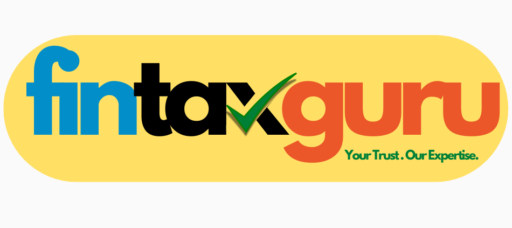Account Maintenance
This way you can see for yourself all that we have to offer. Schedule Now.

Popular
Account Maintenance
“Account Maintenance” typically refers to the process of managing, updating, and maintaining the accuracy of a customer’s or business’s account information, whether it’s in a banking context, online shopping, or other account-based systems. Below are the details of account maintenance.
Account Updates
- Personal Information: Updating the name, email, phone number, address, and other personal information to ensure it is current.
- Payment Methods: Adding, removing, or updating credit cards, bank account details, or other payment options.
- Shipping/Billing Addresses: Ensuring shipping and billing addresses are up-to-date to avoid delays or issues with purchases or deliveries.
Account Information Management
- Username/Email Changes: Some platforms allow users to change their username or email address. This might require verification through emails or text messages.
- Profile Customization: Users may be able to update their profile photos, bio, or social media links, depending on the platform.
- Account Preferences: Adjusting language preferences, time zones, and any other regional settings for convenience.
Enhanced Security Measures
- Multi-Factor Authentication (MFA): Enabling MFA adds an extra layer of security, where users must confirm their identity through a secondary device or application (e.g., a text message code or an authenticator app).
- Login Alerts: Some platforms allow users to receive alerts if there is suspicious login activity or if someone tries to access the account from an unrecognized device.
- Session Management: Users can view and manage active login sessions, and log out of devices remotely to maintain account security.
Subscription and Membership Details
- Renewal Notifications: Users are notified before subscription or membership renewals, allowing them to take action before being charged.
- Payment History for Subscriptions: Reviewing detailed payment history for recurring subscriptions, including dates, amounts, and payment methods used.
- Pausing Subscriptions: Some platforms allow users to pause a subscription temporarily rather than canceling it completely.
Financial Details and Payment Management
- Payment Method Verification: Verifying newly added payment methods, such as entering a verification code sent to a mobile device or small test transactions.
- Refund Preferences: Setting preferences for how refunds are processed, whether they are returned to the original payment method, store credit, or another method.
- Downloadable Financial Records: For tax or accounting purposes, users may download detailed reports of past transactions, including invoices and receipts in formats like PDF or CSV.
Notifications and Alerts Management
- Real-Time Notifications: Customizing which events trigger notifications, such as successful logins, new promotional offers, order status updates, or failed payments.
- Custom Alert Settings: Users may choose to receive certain alerts via email, SMS, or push notifications, and manage which communication channel to use for each type of alert.
- Marketing Preferences: Users can choose the frequency and types of promotional emails they want to receive, such as product launches, seasonal sales, or exclusive offers.
Order and Transaction Management
- Order Filtering: Users can filter order history by date, order status (pending, shipped, delivered, returned), and payment type, making it easier to locate specific orders.
- Dispute Resolution: Accessing options to report issues with an order, such as receiving the wrong item, damaged products, or not receiving a package.
- Order Tracking: Providing real-time tracking information, where users can follow their shipment through each stage of the delivery process.
Support Interaction and Resolution Management
- Live Chat Support: Some platforms provide real-time support through chat for quicker resolution of issues.
- Response Time Estimations: Platforms may provide an estimated time for customer support to respond to inquiries, or users can follow the progress of their support requests in a dashboard.
- Escalation Procedures: In case an issue remains unresolved, users can escalate their case to a higher-level support team, with records of previous communications attached for context.
Data Privacy and GDPR/CCPA Compliance
- Download Personal Data: Platforms often allow users to download their personal data in compliance with privacy regulations like GDPR or CCPA. This includes purchase history, profile data, and communication history.
- Manage Consent: Users can manage what data they allow the platform to collect or share with third parties, adjusting consent preferences for marketing, analytics, and data sharing.
- Request Data Deletion: Under privacy laws, users can request the deletion of their account and personal data, with the platform required to comply within a set timeframe.
Account Closure and Deactivation
- Temporary Deactivation: Some platforms offer the option to deactivate an account temporarily, allowing users to return and reactivate it later without losing data.
- Permanent Deletion: If users choose to permanently delete their account, they may lose access to all data, and this action is often irreversible. However, platforms may keep the data for a short period before permanent deletion for recovery purposes.
- Downloadable Account History: Before deleting an account, platforms may provide the option to download account data, including order history, payment transactions, and communication records.
Loyalty Programs, Rewards, and Points Management
- Points Expiration: Users are notified of upcoming expiration dates for loyalty points or rewards, allowing them to redeem before they lose the points.
- Tier-Based Rewards: Tracking the user’s progress toward achieving higher-tier statuses within a loyalty program, which may come with additional benefits (e.g., exclusive discounts, early access to products).
- Personalized Offers: Loyalty members may receive personalized promotions based on their shopping behavior, purchase history, or tier status.
Managing Multiple Accounts
- Switch Between Accounts: Some platforms allow users to manage multiple accounts (e.g., personal and business) and easily switch between them without logging out.
- Delegate Account Access: For business accounts, users can grant access to team members or other stakeholders with limited permissions (e.g., viewing orders but not making purchases).
- Merge Accounts: In case of multiple accounts, users may have the option to merge them into a single account to avoid confusion and consolidate loyalty points, order history, and preferences.
Mobile App-Specific Account Maintenance
- Push Notifications: Users can manage push notifications directly from the app for order updates, promotional offers, or account security.
- App-Specific Preferences: The mobile app may offer additional features for account management, like app-exclusive discounts, location-based services (e.g., nearby stores or offers), or enhanced support through in-app chat.
Do you have any query?
We will be more than happy to be of help to you!
